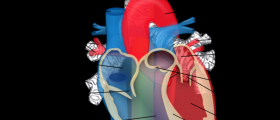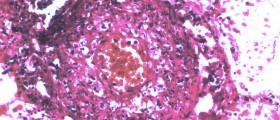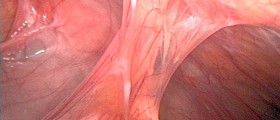Abdominal masses that are pulsatile or bounding can cause concerns in the affected individual.
Pulsatile abdominal masses can be experienced in relatively thin people who may just be feeling their abdominal aorta or even their livers as blood passes through these anatomical structures
In others though, this can be a sign of a more serious situation. They can include issues such as an enlarged liver, increased pressure in the superior mesenteric artery (that supplies blood to the intestines), an enlarged heart and an abdominal aortic aneurysm, which will be discussed here.

Abdominal aortic aneurysm
An abdominal aortic aneurysm (AAA) is an area of enlargement that involves a part of the abdominal aorta, which is the major artery that runs from the heart, through the centre of the chest and abdomen and down to the pelvis where it branches into the iliac arteries. This blood vessel supplies oxygenated blood to all the areas of the body.
Causes
The exact cause of an AAA isn't known, but there are numerous issues that could be involved, and they include:
- Hardening of the arteries, known as atherosclerosis.
- Cigarette smoking and using other forms of tobacco products.
- High blood pressure that can damage and weaken the aorta's walls.
- Diseases or infections in the abdominal section of the aorta.
- Trauma.
- AAA can be hereditary.
Symptoms
AAAs are slow growing and usually don't cause any symptoms or signs. There are those that start off small and stay that way as well, and there are those that never rupture.
There are those AAAs though that grow and expand quickly and they are the ones that become symptomatic. These signs and symptoms may include:
- A pulsating sensation around the umbilicus.
- A constant deep pain in or on the side of the abdomen.
- Back pain
Diagnosis
An AAA that is pulsatile will be able to be felt by the examining doctor. This will raise the suspicion of an AAA and the doctor may order the following investigations to confirm the diagnosis.
-
Abdominal ultrasound.
-
CT (computerized tomography) scan.
-
Magnetic resonanceimaging (MRI) and/or magnetic resonance angiography.
Management
The aim of managing an AAA is to prevent the aneurysm from tearing. The choices in management comes down to either monitoring the situation or surgical intervention, and this depends on the size of the aneurysm and how quickly it's expanding.
Medical monitoring
Regular follow up visits and ultrasound examinations every 6 months are organized for patients who have small AAAs and who are not symptomatic. This is to make sure that the aneurysm isn't expanding and that you receive treatment for other conditions that could worsen the AAA.
Surgery
Surgical intervention is recommended for AAAs that are larger than 2.2 inches/5.5 centimeters. Surgery may also be recommended if the aneurysm is growing quickly.
Surgical options may include:
-
Open abdominal surgery.
-
Endovascular surgery.
















